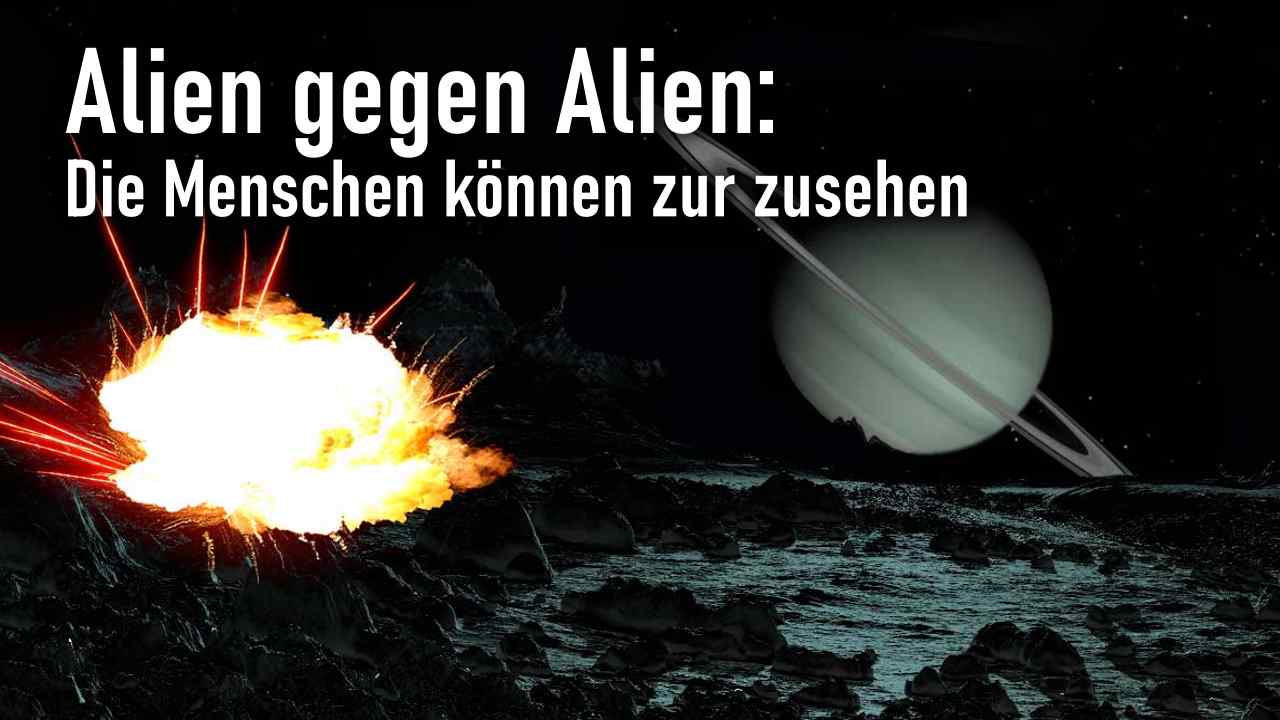
2587 Zeit der Alien-Kriege

Aliens kämpfen um das Solsystem. Wer das Solsystem beherrscht, bekommt den Tribut der Menschheit. Ihre Waffen sind denen der Menschen weit überlegen. Die Menschen können nur zusehen.
Der Saturn Mond Epimetheus, Hauptsitz der Art-Domäne im Solsystem, wird angegriffen. Die Menschen beobachten kinetische Angriffe, Explosionen und Schwärme von Mechs. Es ist nicht zu erkennen, ob es sich um Drohnen, Bots oder Shells handelt. Wer dort gegen wen kämpft, ist unklar. Offensichtlich bekämpft die Artu-Domäne andere Aliens. Aber ob es sich um interne oder externe Feinde handelt, ist unbekannt. Soweit die Menschen wissen, ist die Artu-Domäne die dominierende Macht der lokalen interstellaren Umgebung. Aber anscheinend ist sie nicht unangefochten.
Die Menschen des Sonnensystems sind nur Zuschauer. Manchmal geraten auch Fahrzeuge und Siedlungen der Menschen zwischen die Fronten. Die unbekannten Kontrahenten nehmen keine Rücksicht. Die Kämpfe ziehen sich mit unterschiedlicher Intensität insgesamt über 25 Jahre.
Aus dem interstellaren Raum kommen Schiffe mit hoher Geschwindigkeit in das Saturnsystem. Sie transportieren Pods mit überdimensionierten Triebwerken. Die Pods bremsen scharf innerhalb von wenigen Stunden zu einem Zero-Intercept mit Epimetheus und entladen Drohnenschwärme. Sie greifen Epimetheus an. Von anderen kleinen Saturnmonden greifen weitere militärische Kräfte ein. Die Kämpfe umfassen bald das ganze Saturn-Ringsystem. Angreifer und Verteidiger setzen Hightech-Waffen ein mit Leistungsparametern weit jenseits dessen, was die solare Menschheit herstellen kann.
Die erste Welle der Kämpfe dauert einige Wochen. Dann kehrt Ruhe ein. Die Artu-Domäne ordnet den Wiederaufbau der beschädigten Einrichtungen an. Wenige Monate später treffen neue Kräfte ein und die Kämpfe beginnen wieder. Die beteiligten Fraktionen sind nicht zu unterscheiden. Es gibt keine Kennzeichnungen. Alle Parteien verwenden eine ähnliche Technik. Immer wieder flammen Kämpfe auf. Die Infrastruktur des Abgabesystems bei Saturn wird schwer in Mitleidenschaft gezogen. Es scheint um die Kontrolle des Abgabesystems zu gehen.
Solaren Nachrichtenagenturen berichten ausführlich über die Ereignisse. Das ist sehr gefährlich, da sich die Kämpfe oft plötzlich ausweiten. Häufig geraten Beobachtungsschiffe und Drohnen der Nachrichtendienste zwischen die Fronten, die sich sehr schnell verschieben. Die kämpfenden Parteien nehmen keine Rücksicht auf unbeteiligte solare Fahrzeuge und Einrichtungen. Die interplanetare Wirtschaft ist immer wieder von den Auswirkungen, d.h. von Zerstörungen, betroffen. Die Hälfte der interplanetaren Bevölkerung findet sich irgendwann im Verlauf der Alien-Kriege im Bereich von Kampfhandlungen. Es gibt insgesamt ca. 30 Millionen Verluste unter den Bios und Uploads der solaren Menschheit, davon aber nur 1,5 Millionen final.
Mehrmals besetzen fremde Kräfte solare Anlagen, Frachtterminals, orbitale Rohstofflager und industrielle Fab-Arrays. Die Besatzungstruppen sind nicht zu identifizieren. Widerstand solarer Einheiten ist zwecklos. Manchmal ziehen die fremden Kräfte plötzlich wieder ab. Manchmal werden sie angegriffen und verteidigen sich.
Die fremden Truppen sind bemannte Mikroeinheiten, Mechs und Drohnen. Aufgrund von Analysen des taktischen Verhaltens und der Kommunikationsmuster vermutet man, dass das Kommando von Biosophonten in Mikroeinheiten ausgeht. Die taktischen Einsatzkräfte sind halbautonome Drohnen, die von Mechs mit Upload-Besatzung dirigiert werden. Biosophonten treten fast nie in Erscheinung. Bemannte Kommandoeinheiten, Mechs und Drohnen ähneln sich äußerlich sehr. Man kann sie aber manchmal durch ihre Leistungsparameter und ihr Verhalten unterscheiden.
Im Lauf der nächsten 13 Jahre werden auch immer wieder solare Einrichtungen beschädigt und zerstört. Vor allem das Abgabesystem und dessen Transportkapazitäten sind betroffen. Die Verladeterminals von Epimetheus sind 25 Mal umkämpft. Sie werden dabei acht Mal vollständig zerstört und jedes Mal wiederaufgebaut. Reparatur und Wiederaufbau der Infrastruktur im Saturnsystem wird im Lauf der Zeit weitgehend automatisiert. Den Großteil des Wiederaufbaus leisten solare Fraktionen als Abgabeersatzleistungen. Dafür wird ein wesentlicher Teil der Abgaben aufgewendet. Man vermutet, dass während der Zeit der Alien-Kriege 30% der Abgaben in die Wiederherstellung der Infrastruktur und damit in den interplanetaren Teil der solaren Wirtschaft fließen. Das wirkt sich als gigantische Subvention der interplanetaren Infrastruktur aus und wird im Wesentlichen von der Erde getragen.
Die Bevölkerung der Planeten, besonders der Erde, nimmt das Geschehen nur durch die Nachrichten wahr. Während in planetaren Orbits immer wieder gekämpft wird, bleiben die Planetenoberflächen weitgehend verschont. Für die Menschen der Erde erscheinen Berichte über Explosionen, Zerstörungen und Verluste irgendwo im Sonnensystem wie Berichte über Tornados am anderen Ende der Welt.
Die einzige Ausnahme ist eine Explosion im Südatlantik, die zu einem verheerenden Tsunami an der Küste Patagoniens führt und 140.000 Menschenleben kostet. Montevideo wird vollständig überflutet. Die Mündung des Rio de la Plata fokussiert die Fluten und lässt die Wasserwand bei Buenos Aires auf 30 Meter Höhe ansteigen. Bei Rio de Janeiro ist die Welle noch 10 Meter hoch. Alle Küsten Südamerikas sind stark verwüstet. Das historische Buenos Aires ist verschwunden. Man geht davon aus, dass es sich nicht um einen gezielten Schlag, sondern um einen Unfall handelt. Eine Trägerplattform, die sich mit 150 Kilometer pro Sekunde schnell der Erde näherte, geriet außer Kontrolle und stürzte auf die Erde. Der Tsunami wird ausgelöst durch den kinetischen Einschlag mit einer Energie von 80 Megatonnen (TNT) und einer Antimaterie-Explosion nach Einschlussverlust mit 400 Megatonnen-Äquivalent.
Nach der Tsunami-Katastrophe am Neujahrstag 2601 ruhen die Kämpfe für acht Jahre.
Wie man später erfährt, wird die Erde bei allen Kampfhandlungen absichtlich ausgespart, um die imperiale Konvention zum Schutz von Völkern der Kategorie 19 nicht zu verletzen. Der Unfall im Südpazifik ist eine fahrlässige Übertretung imperialer Vorschriften. Die Menschen kennen weder das Interianische Imperium noch Kisor als Regionalzentrum. Sie kennen nur die Artu-Domäne, die von sich behauptet, die regionale Macht zu sein. Aber die Artu-Domäne ist nur eine Fiktion für die Menschen. Das Interianische Imperium ist die wahre interstellare Macht. Und Kisor verwaltet den lokalen Sektor.
Die streitenden Parteien entstammen der interstellaren Zivilisation. Sie sind Subjekte des Imperiums. Sie kennen die rechtlichen Grenzen und sie operieren im Solsystem weitgehend innerhalb des gesetzlich vorgeschriebenen Rahmens. Aber die nächsten imperialen Behörden auf Kisor sind weit weg und die übliche laxe Auslegung der imperialen Bestimmungen lässt die von der Artu-Domäne im Rahmen des Abgabesystems praktizierte Erpressung zu. Das Imperium toleriert Diebstahl, Erpressung und Kollateralschäden in Systemen nichtregistrierter Völker innerhalb der Imperiumsgrenzen, solange "unbeteiligte zivile Sophonten weitgehend unbeschadet" bleiben.
Aber der Südpazifik-Vorfall überschreitet eine rote Linie. Die Konfliktparteien befürchten eine Untersuchung durch kisorische Inspektoren, bei der dann möglicherweise weitere Übertretungen auffallen würden. Denn die Etablierung der Artu-Domäne und des Tributsystems für das gesamte Solsystem einschließlich der Erde grenzt aus Sicht des Imperiums an Amtsanmaßung.
Ein ruppiger Umgang mit nichtregistrierten Völkern ist durchaus üblich. Es kommt oft vor, dass Vertreter von Hochkulturen sich am Eigentum wehrloser Völker bedienen. Das Imperium kann nicht überall sein. Und die Lüge mit der Artu-Domäne als interstellare Macht, trägt immerhin dazu bei, dass das Abgabesystem friedlich abläuft, mit geringem Schaden für "die Eingeborenen", die Menschen des Solsystems. Man könnte sogar argumentieren, dass die Menschen freiwillig zahlen. Auf der anderen Seite ist die Behauptung der Artu-Domäne, die herrschende interstellare Macht zu sein, anmaßend. Das wird nicht besser dadurch, dass die sogenannte Artu-Domäne aus ständig wechselnden Allianzen von Gruppen mit zweifelhafter Reputation besteht. Aus Sicht der Imperiumsbehörden von Kisor ist die Artu-Domäne ein Zusammenschluss von Freibeutern, Söldnern und Piraten. Man lässt sie gewähren solange sie sich unauffällig verhalten und vor allem solange sie dem Imperium nicht schaden.
Die Absicht unter dem Radar zu bleiben, ist der eigentliche Grund dafür, dass die Artu-Domäne nur einen kleinen Teil des solaren Bruttosozialprodukts abschöpft. Die Wirtschaft des Solsystems ist aus Sicht des Imperiums rückständig und marginal. Das Abgabesystem nimmt davon nur wenige Prozent. Für die Menschheit sind die Abgaben gewaltig, aber für etablierte interstellare Mächte ist der Betrag vernachlässigbar. Was sich im Solsystem abspielt, ist ein Grenzfall. Das Vorgehen der Artu-Domäne ist eigentlich illegal. Aber es wird vom Imperium toleriert. Trotzdem geht die Artu-Domäne Diskussionen mit den imperialen Behörden lieber aus dem Weg.
Aber das wird schwierig bei hohen Verlusten unter zivilen Nichtkombattanten. Eine Explosion von fast 500 Megatonnen auf der Oberfläche eines dicht besiedelten Planeten hat eindeutig genozidales Potential. Die kisorischen Imperiumsbehörden sind ziemlich dünnhäutig, wenn es um Völkermord mit Massenvernichtungswaffen auf Planetenoberflächen geht. Auch wenn es sich nur um Menschen in einem weit entfernten, rückständigen, nichtregistrierten System wie Sol handelt.
So einigen sich die fremden Konfliktparteien auf ein Moratorium unter Suspendierung der Auseinandersetzungen und eine Aufteilung der Erträge des Abgabesystems. Den Menschen bleibt das alles verborgen.
Für die Menschen sind die Alien-Kriege wie eine Naturgewalt. Man kann sie nicht beeinflussen und man versteht nicht was vorgeht. Sie kommen plötzlich und unvorhersehbar. Niemand weiß wann und wo Kämpfe der Aliens auftreten. Man versucht die Ereignisse mit statistischen Methoden zu erfassen, um Gefahren vorherzusagen. Die besten Prognosen liefern Modelle, die eine große Zahl kleiner Akteure mit schnell wechselnden Zusammenschlüssen repräsentieren. Die charakteristischen Zeiten der Modellfits sind drei Wochen für Allianz und vier Monate für Dominanz. Mit anderen Worten: es kämpfen viele kleine Fraktionen, die sich ständig verbünden und wieder hintergehen. Bündnisse halten nur drei Wochen und siegreiche Bündnisse können ihre Überlegenheit immerhin vier Monate aufrechterhalten, bevor das nächste Bündnis mit wechselnden Partnern die Hoheit übernimmt.
Viel später stellt sich heraus, dass die Modelle der Wahrheit ziemlich nahekamen. Clans von Artu kämpfen um die Machtposition im Solsystem: Der f96427 Clan etabliert die Artu-Domäne und kann sich einige Jahre behaupten. Im Jahr 2585 muss f96427.11 seinen Anspruch mit einem Zusammenschluss mehrerer Clans teilen (a5713). a5713 hat wechselnde Mitglieder (a5713.1-a5713.45), wehrt sich gegen a2003/f8563 und muss sich dann einer anderen Gruppe (a301) geschlagen geben. Danach beginnt eine 10-jährige Phase schneller Allianz- und Dominanzwechsel.
Die Geschehnisse werden später rekonstruiert durch Historiker von Artu. Den Menschen werden die Details erst 250 Jahre später bekannt durch die Veröffentlichung der Dokumentation Barbaren von Sol des Media-Clans u54273 im Jahr 2826.
Mehr Kriege
2376 Kopernikus-Newhavn Kontroverse
2400 Krieg im Gürtel
2432 Imperialismus im Gürtel
2471 Krieg auf der Venus
2532 Panik im Sonnensystem
2550 Systemkrieg
2557 Invasion aus dem Orbit
2587 Alien gegen Alien
2649 Angriff aus dem Weltraum
2705 Erster interstellarer Krieg
2720 Spacedom-Tragödie
2722 Sein Leben für die Kinder
2830 Aliens im Krieg
2859 Interplanetarer Krieg
2885 Kisor vs. Sol
2915 Belagerungskanone
3061 Bürgerkrieg der Schwärme
3116 Shackleton-Aufstand
3190 Überraschungsangriff
3245 Sterge-Blockade
3340 Strategische Initiative
3361 Erste Menschheit
Neue Beiträge
2326 Kein interplanetarer Krieg
3050 Königliche Garde
3090 Solo Ehre
2234 Am Ende des Orbits
2248 Gemini-Katastrophe
2366 Orbitale Ökonomie
2222 Weltraumpiraten
2312 Kaio-Artefakt
3361 Erste Menschheit
2333 Metrische Impulsverstärkung
2337 Verschwörung im Orbit
2247 Quantensprung
2158 Space Patrol
2284 Trennung der Erde
2321 Isolation der Erde
2205 Unternehmensnationen
2192 Antiexpansionistischer Terror
2179 Private Asteroidenbasis
2231 Vereinte Planeten
2291 Verbotene Forschung
Die Besten
(20 von 75)
2247 Quantensprung
2321 Isolation der Erde
2333 Metrische Impulsverstärkung
2445 Scum-Festival
2493 Oumuamua
2501 Extraplanetare Forschung
2532 Panik im Sonnensystem
2587 Alien gegen Alien
2725 Auch Maschinen haben ein Gewissen
2786 Nette Aliens
2794 Prophet der galaktischen Händler
2806 Weltraum Müll
2841 Leuchtender Tempel
2915 Belagerungskanone
3090 Solo Ehre
3110 Zersplitterung des äußeren Systems
3191 Umzug nach Cobol
3296 Drachenlegenden
3340 Strategische Initiative
3361 Erste Menschheit
 2585
Erster Kontakt mit Thoris
2585
Erster Kontakt mit Thoris

 2591
Flottengesetz
2591
Flottengesetz